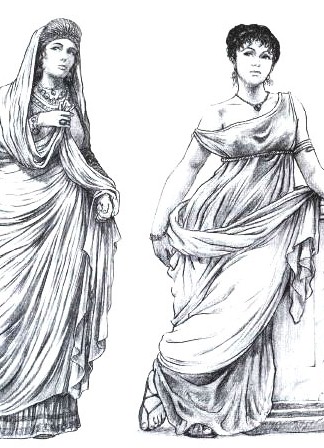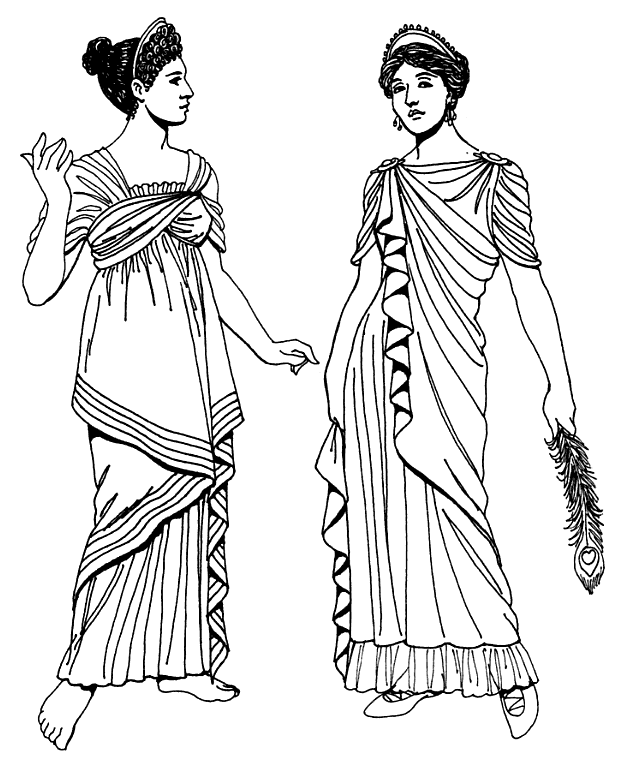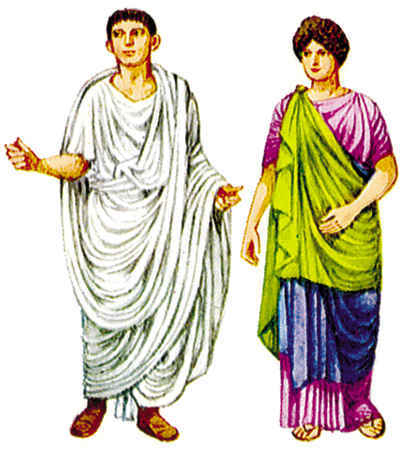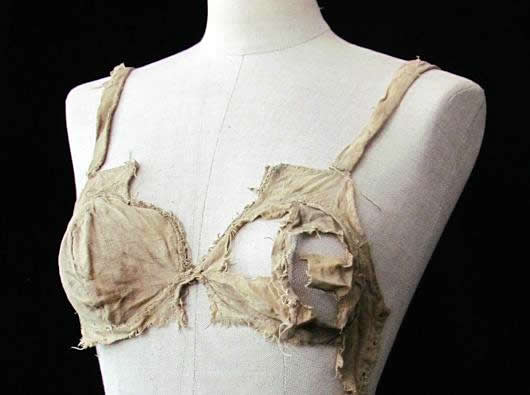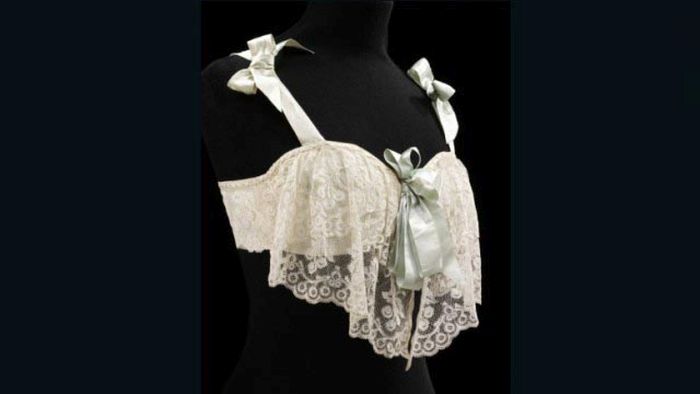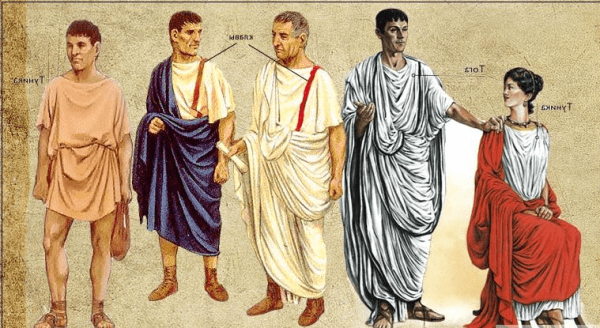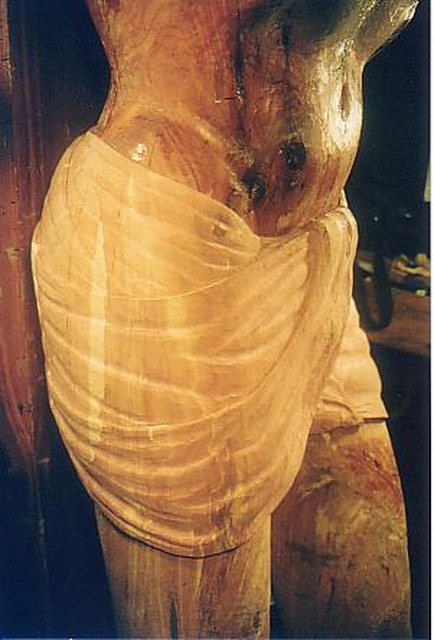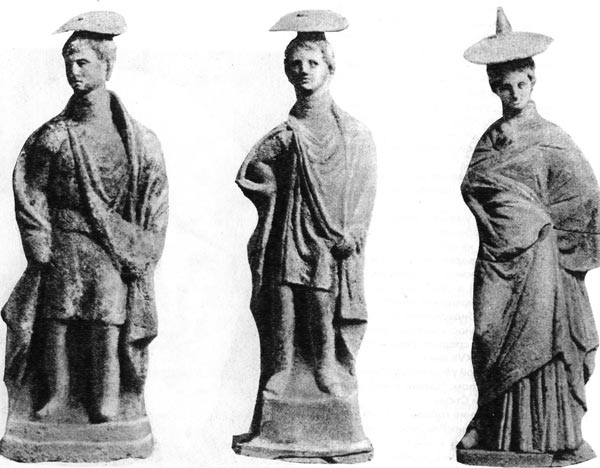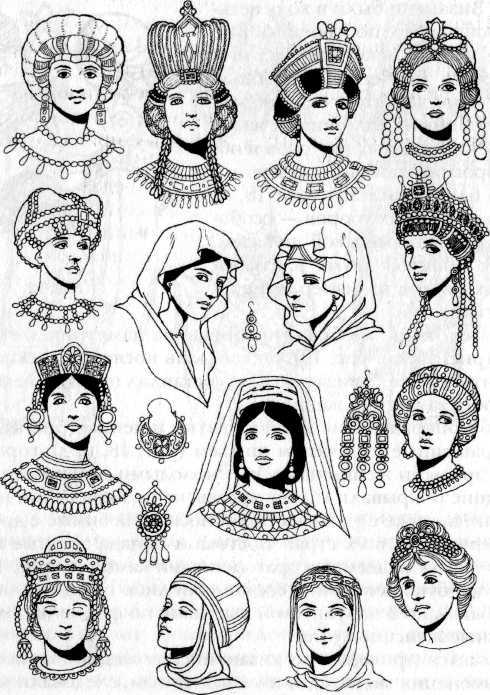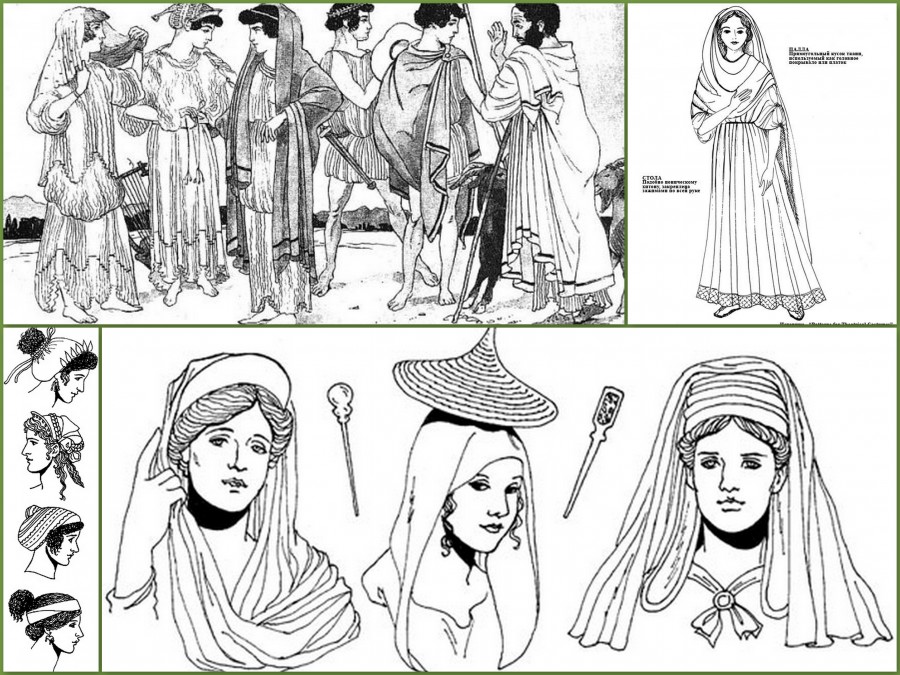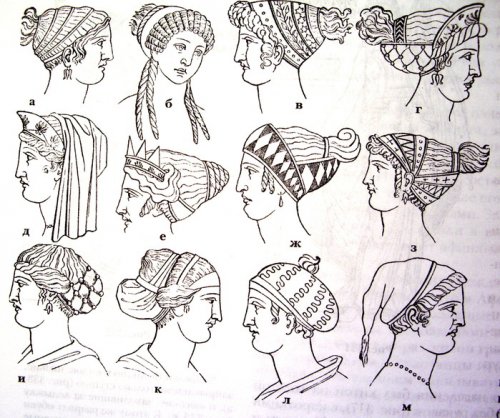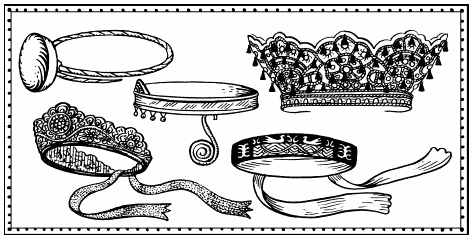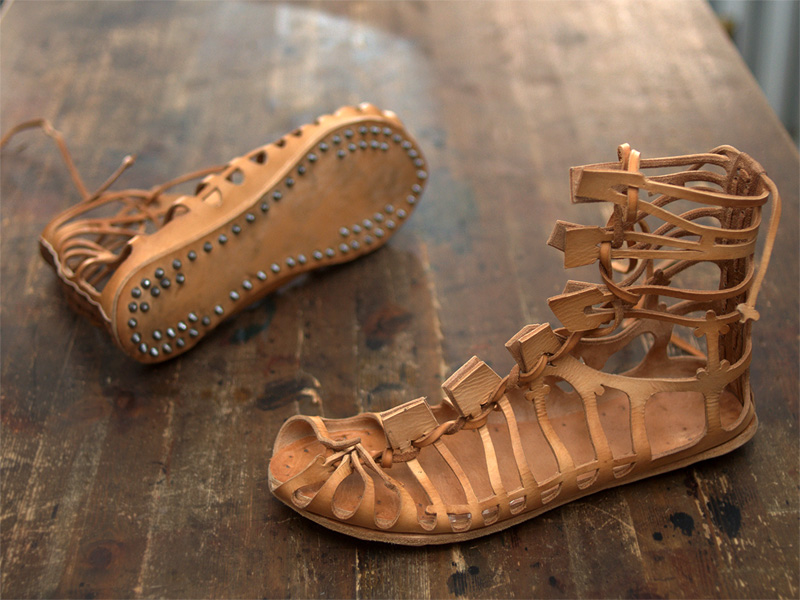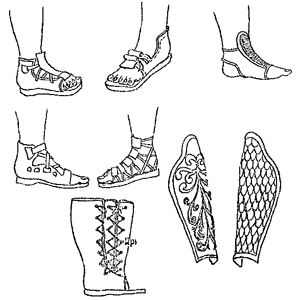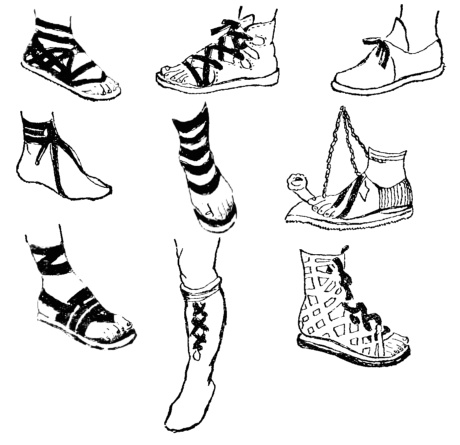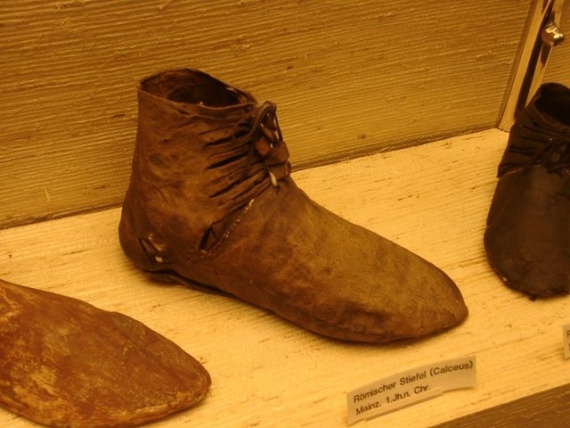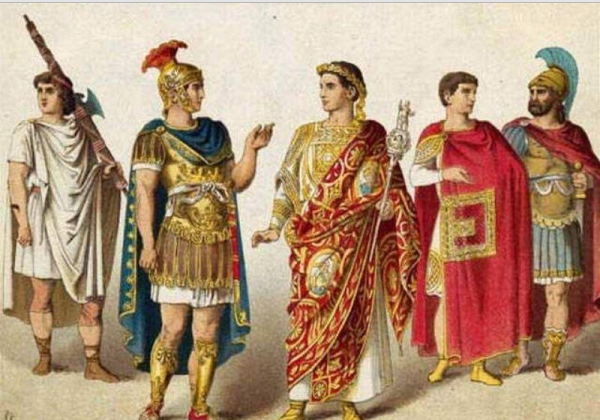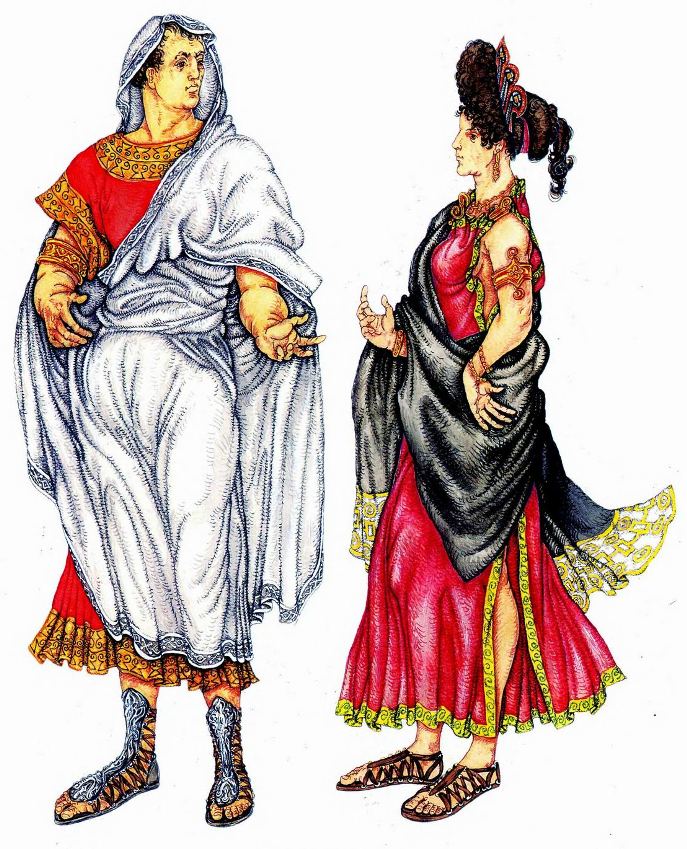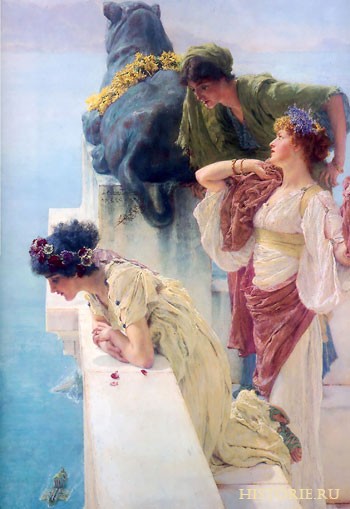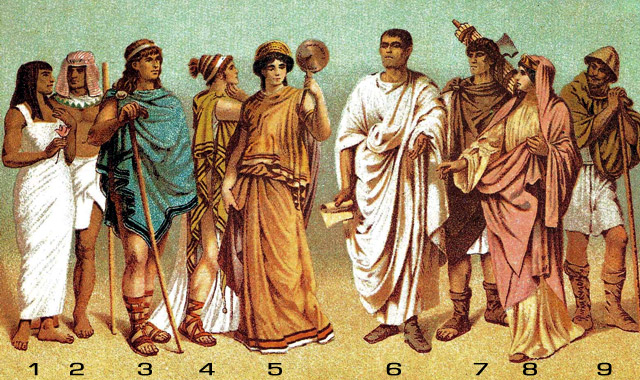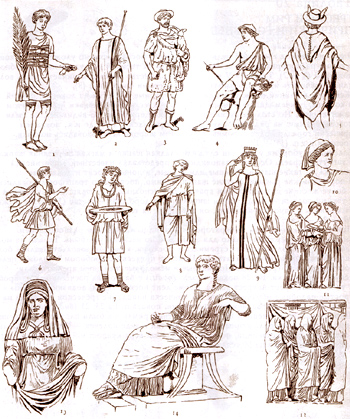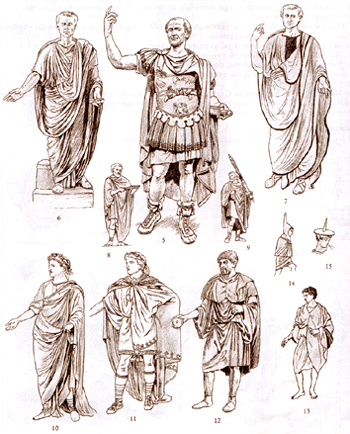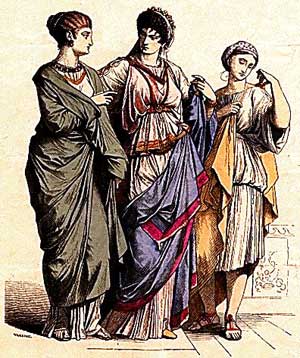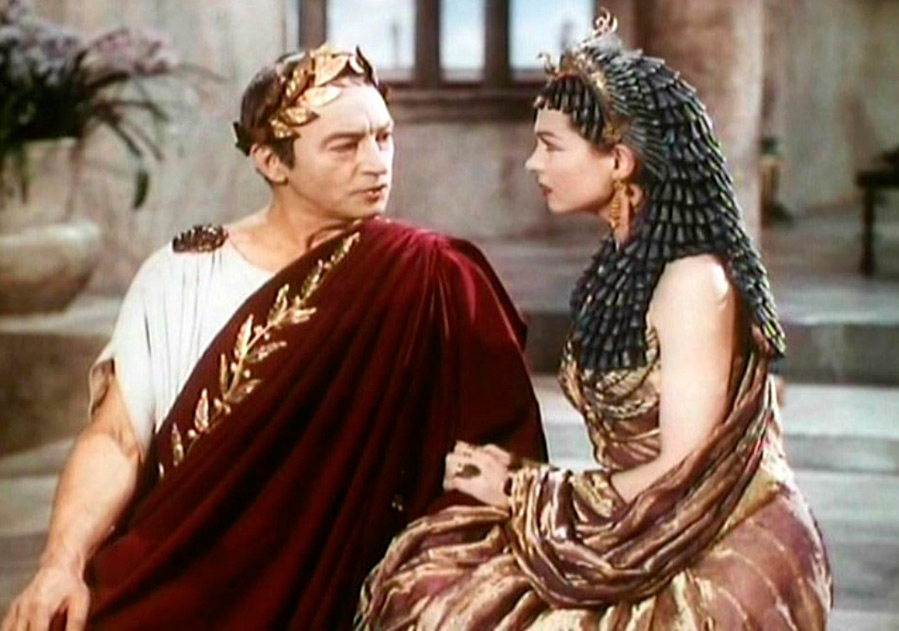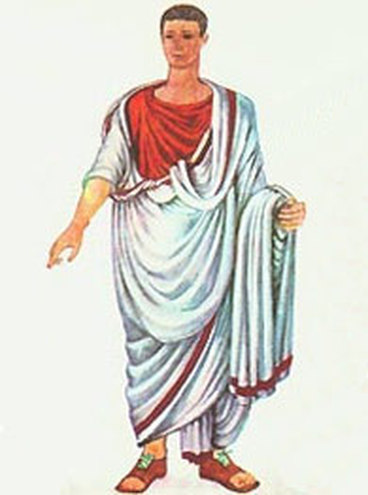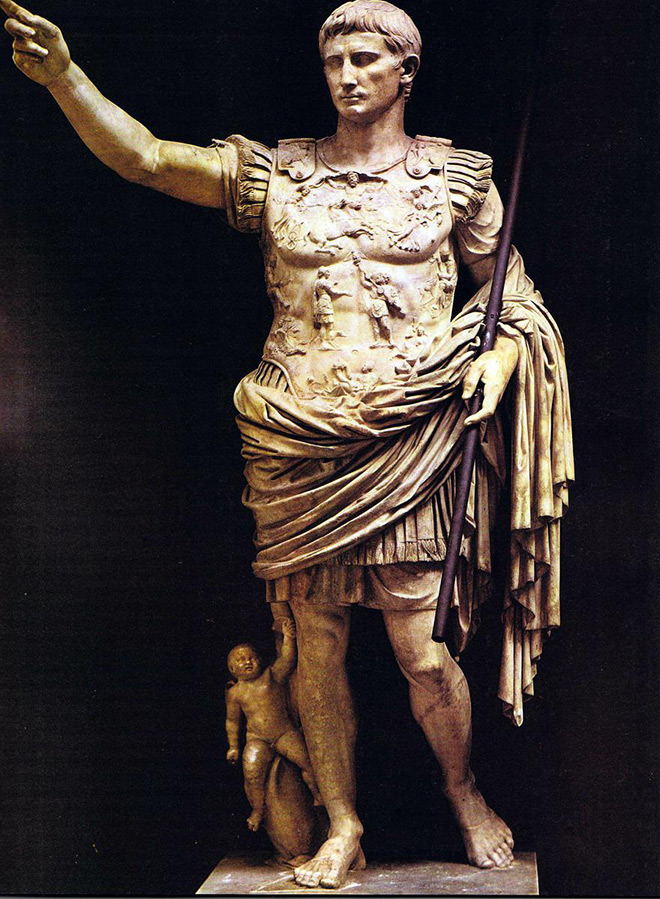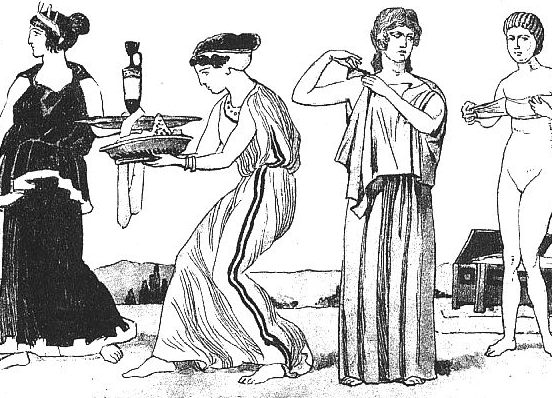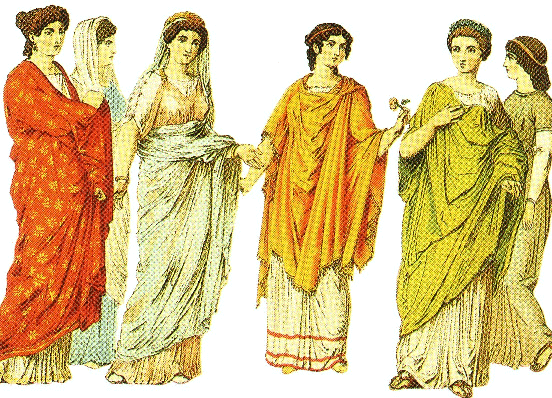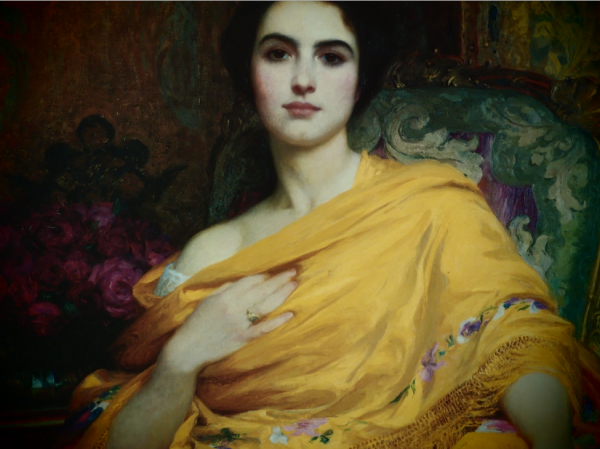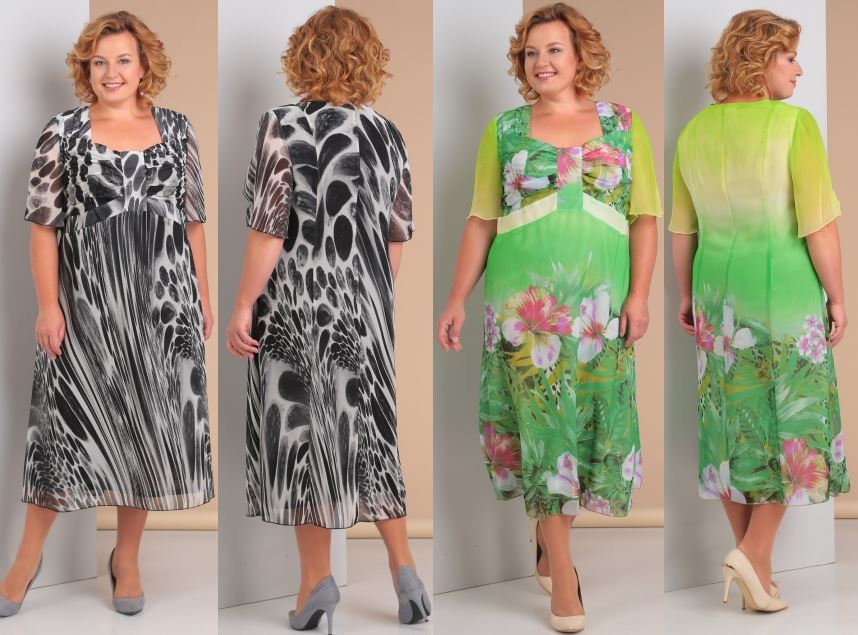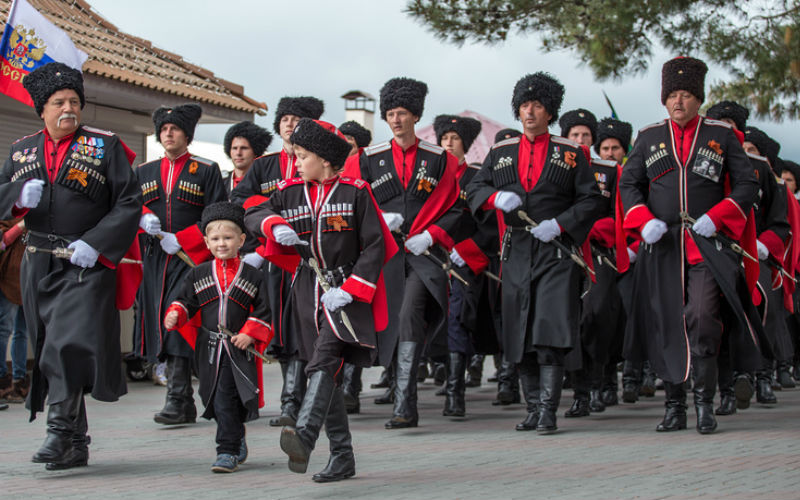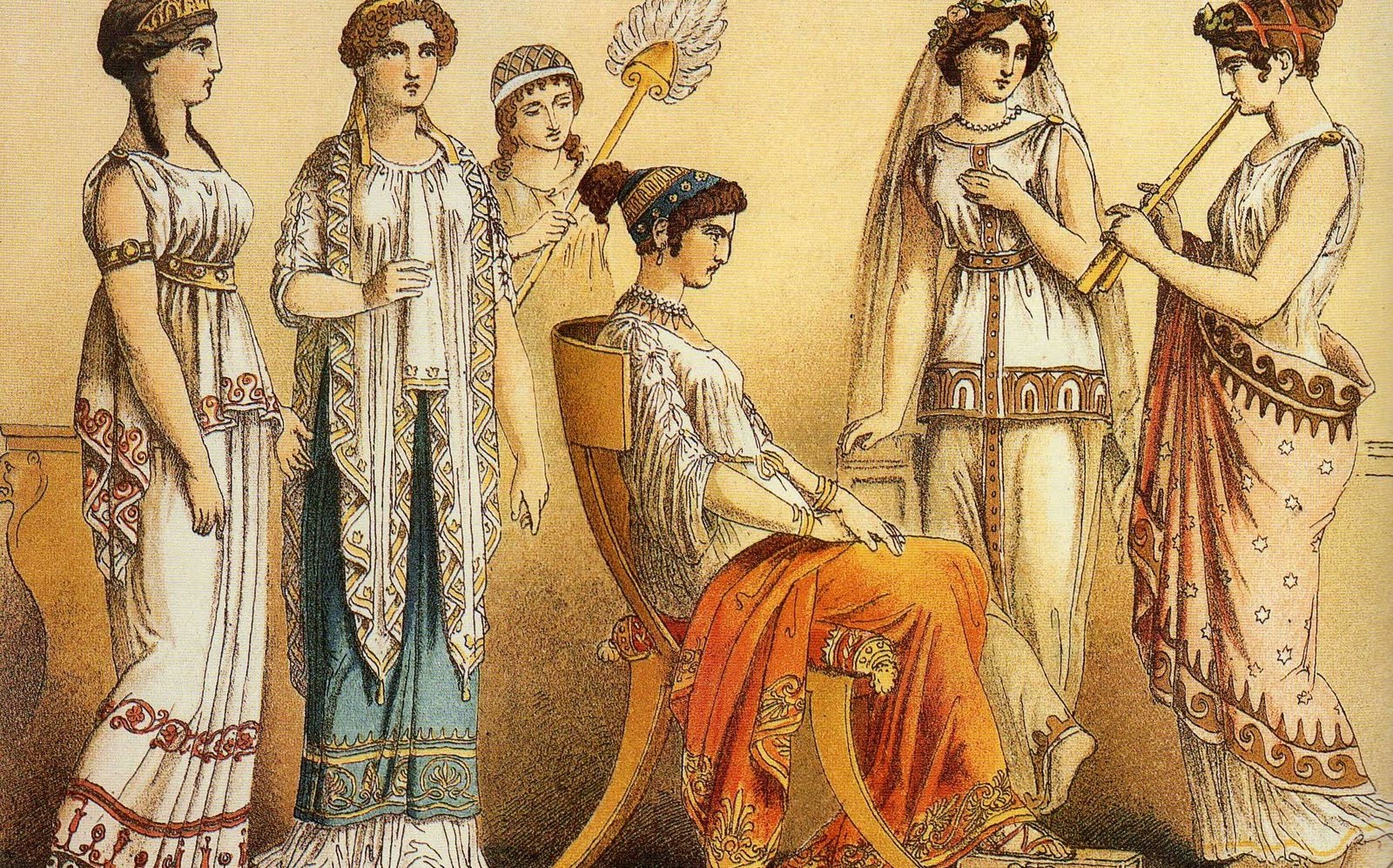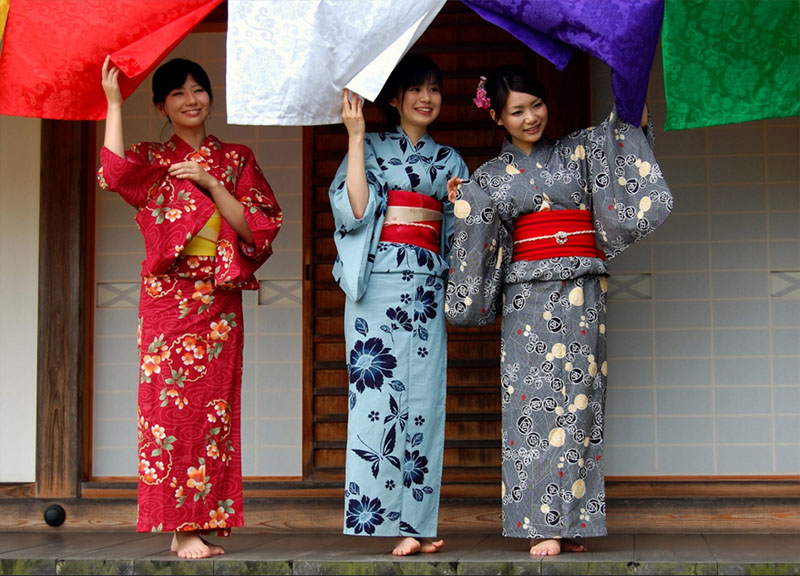Ancient Rome, the abode of powerful rulers and brave military leaders. All the wealth of ancient Roman culture could not but be reflected in the clothes of this people. There are two main stages in the development of Roman costume: republican and imperial. The clothing of the ancient Romans of the republican stage is characterized by severity and functionality, and the imperial, on the contrary, emphasizes the attitude of the owner of the clothes to a particular class. The imperial stage represented a greater variety and splendor of clothing.
Types of clothing
The costume of the ancient Romans was not very diverse. The main items of clothing were the same even between the social classes. Both the poor and the rich wore practically the same thing. The main difference was in the materials and additional decorations. The clothing of men and women was also similar, but there were several distinctive features.
Male
The first and main item of clothing of the ancient Roman was the tunic. At that time, it was considered the undergarment, over which the main one was worn. The tunic is an item that is put on over the head.
There were three main types of this garment:
- Colobium;
- Talaris;
- Dalmatic.
The colobium tunic had short sleeves and a belt. The talaris, on the other hand, had long sleeves. This type of tunic was worn by people of high status. The dalmatica is considered to be the clothing of the first Roman Christians. It is a tunic with long, wide sleeves that resemble a cross when unfolded.
What other clothes did ancient Roman men wear?
- Toga - it was the main representative of outerwear. It is a large long cape, worn over a tunic. The size of this garment was truly impressive: about 6 m of material by 1.8 m. Toga was a garment that personified the national dignity of the Romans. They often called themselves "the people dressed in togas." Only true Romans who were pure before the law could wear a toga. Foreigners, slaves and criminals did not have the right to wear it;
- Poludamentum - this type of cloak could only be worn by emperors and noble people. It was thrown over the back and fastened with a special buckle on the right shoulder;
- Lacerna is a cloak that covers the back and shoulders. It was worn for ceremonial events. It was fastened in the middle at the front. Lacerna was made of expensive and beautiful materials and was available only to the highest nobility;
- Penula - was considered a cloak of the lower class. It was made of wool or leather, very often complemented by a hood. Penula was used mainly by travelers and shepherds. Penula made of more expensive materials was provided for the nobility.
Beginning in the 3rd century AD, trousers came into use among the Romans. They were not very popular and were worn only by soldiers.
The military attire had some specific features. Soldiers wore short woolen cloaks called sagum. Armor was a mandatory element of the military costume. Special protective armor consisted of two parts - front and back - connected by belts and fasteners. Sometimes the hands were also protected by special devices made of metal or leather. On their legs, soldiers wore metal greaves, secured with belts.
The legionnaires' footwear was caligae - protected boots. To protect their heads, soldiers wore metal or leather helmets. Depending on the warrior's position and rank, they were decorated with carvings, as well as feathers and horsehair.

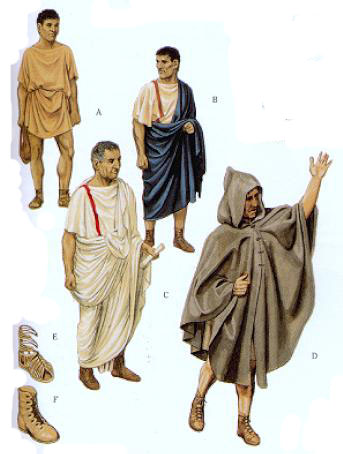
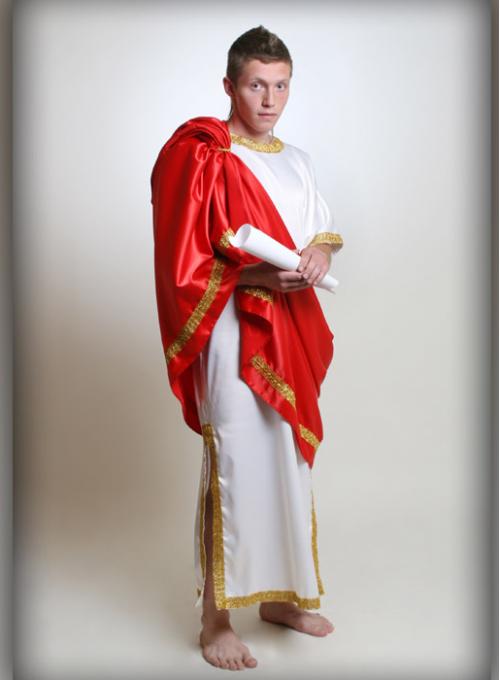
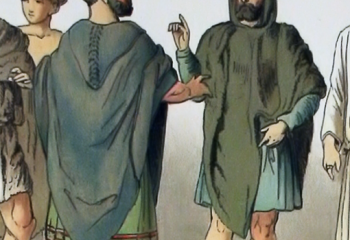
Female
Women's clothing in Ancient Rome was similar to men's. Under their main clothing, women wore tunics. There were both sleeveless and sleeved garments. Representatives of the nobility wore a stola on top. This is a garment very similar to a tunic, but differs in various decorations and frills. The stola was an essential item of clothing for women who were married. Appearing in public places without a stola was considered bad form.
Another item of outerwear was the women's cloak - palla. It was fastened to the body with the help of clasps on the shoulders, which were also called agrafs. Some varieties of this cloak provided for covering the head.
Fabrics
The Romans most often used woolen fabrics to make clothes. However, some items could also be made of leather. Flax was also a very common material. Noble people could afford light silk garments. The famous Cos silk caused a storm of emotions among the Romans. Some condemned wearing clothes made of this material, as it seemed too revealing. Someone, on the contrary, did not spare any money on this product. However, as soon as Chinese silk was brought to the Empire, it immediately surpassed all competitors. Despite its high cost, this material was in great demand. For a long time, due to the shortage of pure silk, "semi-silk" materials were widespread. They were obtained by weaving flax or wool threads into silk. Only by the 3rd century AD did the Romans have virtually unlimited access to pure silk. It was from it that they began to sew clothes for noble and influential people.
Colors
The ancient Roman style of clothing involved the use of bright colors: red, lilac, yellow. The color of clothing was given a special meaning. In particular, red, being the personification of power, accompanied all emperors and rulers. Also, red robes were worn by triumphant commanders. The association of red with power is not accidental. At that time, dyeing fabric purple was a labor-intensive and difficult process. Accordingly, a wardrobe of such colors became quite expensive. White was considered a festive color, and white clothes were worn only on rare occasions.
Ornament
The clothes of the Empire, especially those of the nobility, were often decorated with various ornaments. The leaves of plants such as oak, laurel or acanthus were mainly depicted. Also, favorite elements were ears of grain, figures of people and animals, skulls and various mythologies. Often, one could see images of military trophies and vases on clothes.
Along with aesthetic functions, ornamentation also carried a certain meaning. Ancient garments concealed information about the deities and spirits that the owner of the item revered. And if at first the originality of Roman symbolism was clearly expressed, then later the influence of the East increased.
Underwear
The tunic was considered underwear for the ancient Romans. It was always worn by both men and women under their main clothing. In cold weather, two or more tunics were often worn one on top of the other. Women could wear strophia under the tunic – a prototype of a bra. They were leather strips, the purpose of which was to support the breasts from below. Roman women also knew about bathing suits. At that time, they were strips of fabric tied around the chest and hips.
Headwear
Despite the fact that the Romans adopted many things from the Greeks, the habit of covering the head did not catch on. Headdresses were considered a specific attribute of priests and judges. A hood or the top of a toga, which was thrown over the head, protected people from bad weather. If headdresses were worn, they were hats similar to Greek ones. Peasants could wear hats made of straw or leather. Women covered their heads with bandages, nets or round caps. Representatives of the nobility could attach a veil to the headdress, falling on the shoulders. These headdresses were also taken from Greek culture.
Shoes
In everyday life, the Romans preferred light footwear – solea. These were sandals tied to the foot with special straps. Solea were definitely not suitable for public outings. Because of this, other footwear became widespread: boots, shoes.
When going out, a Roman wore half-boots made of leather, which were called calceus. These shoes covered the owner's foot entirely. The color of the shoes also mattered. An emperor could wear a calceus made of red leather, and a senator - black. Shoes were decorated with various plaques and brooches. The lower classes were content with wooden shoes or shoes made of rough leather. Women's shoes were made from soft leather of various colors. Noble women wore light-colored shoes, framed with pearls or stones.
The influence of Greek culture is very clearly visible in the clothing of the ancient Romans. Much was borrowed practically without changes, but their own originality is also present. The clothing of the ancient Romans was influenced by the strong military component of the life of this people. Not only the conquered territories but also neighboring empires contributed to the culture.
Video


